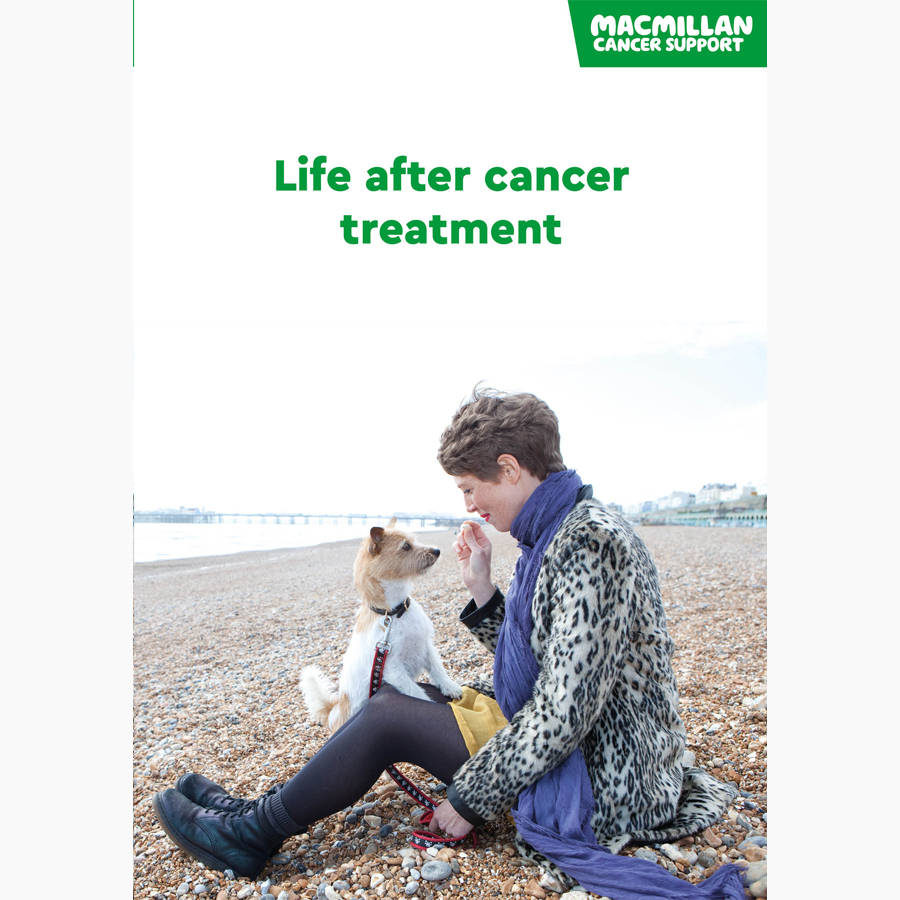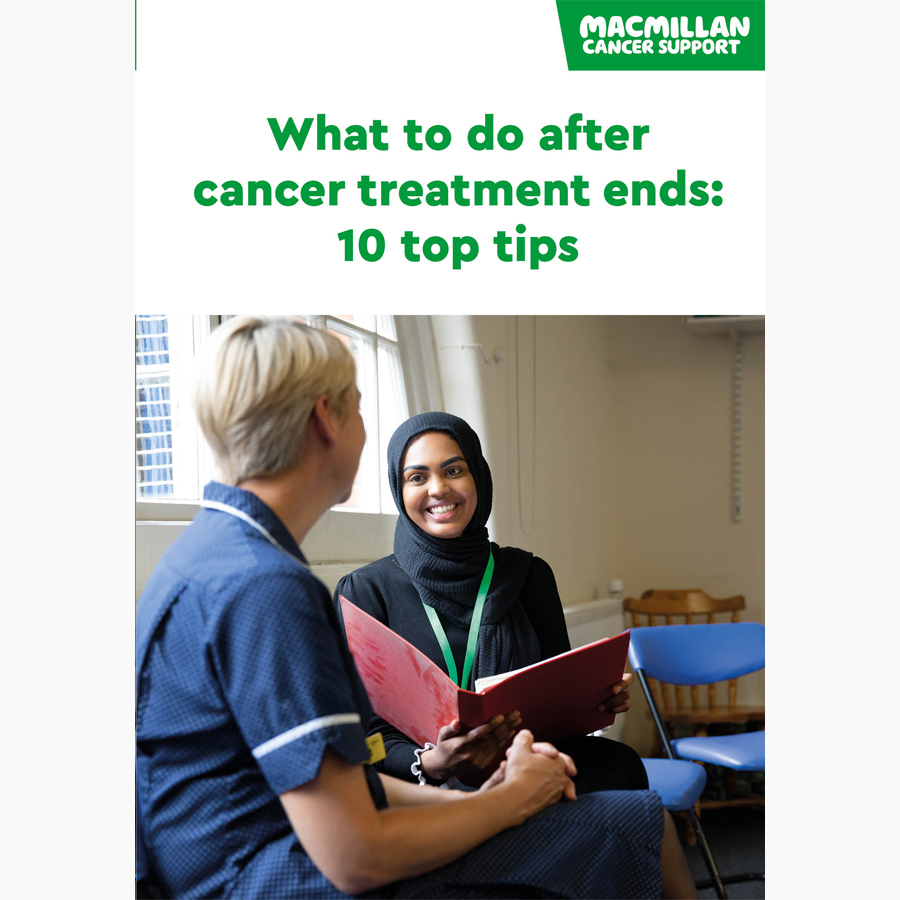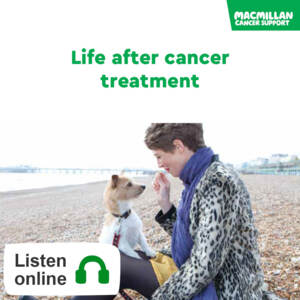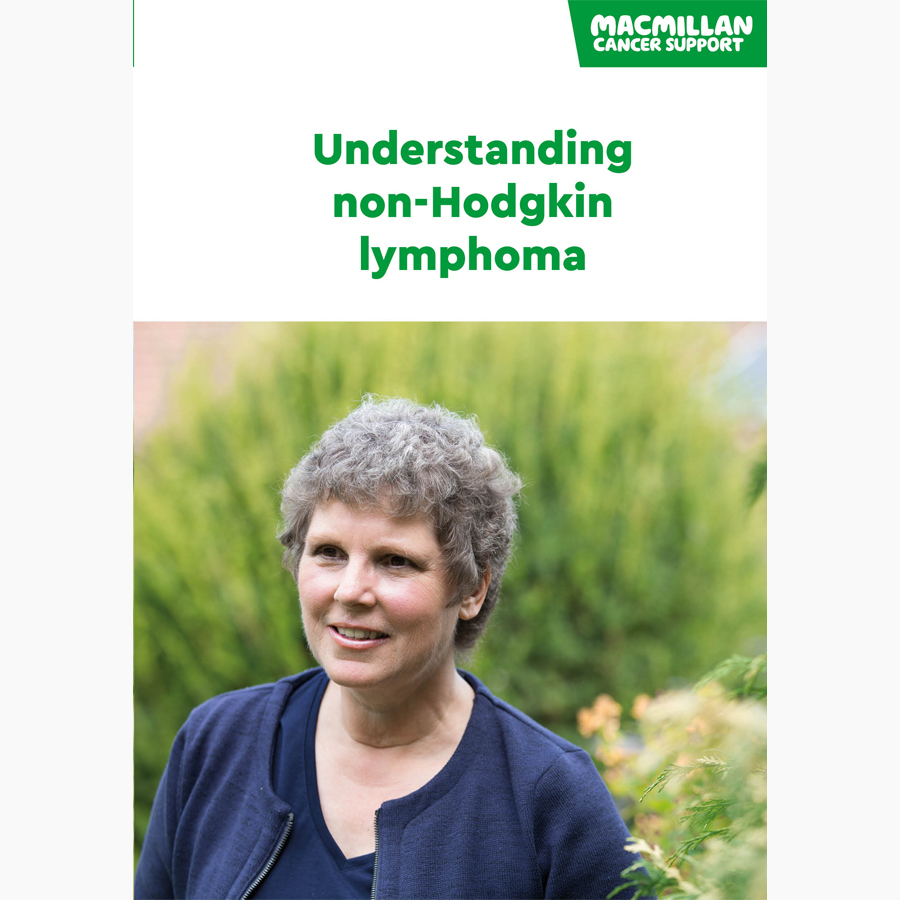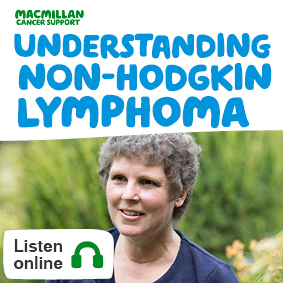MALT lymphoma
MALT lymphoma is a slow-growing type of non-Hodgkin lymphoma (NHL). It is also called extranodal marginal zone lymphoma.
What is MALT lymphoma?
MALT lymphoma is a slow-growing type of non-Hodgkin lymphoma. Like all lymphomas, it is a cancer of the lymphatic system, which is part of the body’s immune system. It develops when white blood cells called B-lymphocytes become abnormal and begin to grow in an uncontrolled way.
MALT lymphoma affects lymphatic tissue called mucosa-associated lymphoid tissue (MALT). Mucosa is the name for the tissue that lines some organs in the body.
The most common area for MALT lymphoma to develop is the stomach. But it may start in other parts of the body, including the:
- lung
- skin
- thyroid gland
- salivary gland
- bowel
- eye.
Related pages
For healthcare professionals
If you are a healthcare professional, use our guide to find the right information and support for your patients affected by lymphoma. This explains the support available from Macmillan and from other trusted organisations.
Symptoms of MALT lymphoma
The symptoms of mucosa-associated lymphoid tissue (MALT) lymphoma depend on where in the body it started. You may have no symptoms at all.
For example, MALT lymphoma that started in the stomach may cause symptoms such as:
- indigestion
- pain in the tummy (abdomen)
- loss of appetite
- feeling sick (nausea).
MALT lymphoma that started in the lung may cause symptoms such as:
- a persistent cough
- breathlessness.
Related pages
B symptoms
Some people also have symptoms that doctors call B symptoms. These can include:
- drenching night sweats which require a change of nightwear and bed covers
- high temperatures (fevers) with no obvious cause
- unexplained weight loss.
Knowing if you have any B symptoms will help your doctor to stage the lymphoma and plan your treatment.
Causes of MALT lymphoma
Mucosa-associated lymphoid tissue (MALT) lymphoma usually starts in areas of the body where there has been long-term inflammation. This may be because of an infection or autoimmune condition in that area.
-
Infection
Most MALT lymphomas that develop in the stomach can be linked to an infection bacteria called Helicobacter pylori (H. pylori). If H. pylori infection is not treated, it can cause long-term inflammation of the stomach lining. Over time, this may cause a MALT lymphoma to develop.
Bacterial infections in other parts of the body may also cause a MALT lymphoma to develop. These can include the skin, eyes and bowel.
Long-term infection with the hepatitis C virus (HCV) is also a risk factor for MALT lymphoma. But it is important to remember that most people with HCV will not develop lymphoma.
-
Autoimmune conditions
Most MALT lymphomas that develop in the thyroid gland, salivary glands and lungs can be linked to autoimmune conditions. These include Hashimoto’s thyroiditis and Sjögren’s syndrome. Autoimmune diseases develop when the immune system attacks healthy body tissue by mistake.
- In Hashimoto’s thyroiditis, the immune system attacks the thyroid gland, making it less active. This affects the level of hormones it produces.
- In Sjögren’s syndrome, the immune system attacks glands that make tears and saliva. This causes dry eyes and a dry mouth.
MALT lymphoma can affect people of all ages, but it is more common around the age of 70.
Like other cancers, MALT lymphoma is not infectious. It cannot be passed on to other people.
Diagnosis of MALT lymphoma
The most common test for diagnosing mucosa-associated lymphoid tissue (MALT) lymphoma is a biopsy. A doctor will take a sample of tissue from the affected area. The tissue will be sent to a laboratory for testing.
The type of biopsy you need will depend on where the lymphoma has developed.
If you might have MALT lymphoma in the stomach, you will usually have an endoscopy. During the endoscopy, the doctor or nurse may take biopsies from different areas of your stomach.
If you might have MALT lymphoma in your lungs, your doctor may do a bronchoscopy.
Your cancer doctor or specialist can explain more about biopsies.
You can read more about the tests you may have in our information about non-Hodgkin lymphoma.
Waiting for test results can be difficult. You may find it helpful to talk to your family, friends or specialist nurse.
Related pages
The stages and grade of MALT lymphoma
Your test results will help your doctors find out how many areas of your body are affected by lymphoma and where these areas are. This is called staging.
In MALT lymphoma of the stomach, doctors also measure how far the lymphoma has spread from the lining of the stomach into the deeper layers of the stomach.
Most MALT lymphomas are diagnosed at an early stage.
Lymphomas are also often grouped as either low-grade or high-grade. Low-grade lymphomas are usually slow growing. High-grade lymphomas usually grow more quickly. MALT lymphoma is a low-grade lymphoma. Rarely, it can change (transform) to a high-grade lymphoma.
Knowing the stage and grade of the lymphoma helps your doctor plan the right treatment for you.
We have more information about the stages and grades of non-Hodgkin lymphoma.
Treatment for MALT lymphoma
A team of specialists will meet to discuss the best possible treatment for you. They are called a multidisciplinary team (MDT).
Your doctor, cancer specialist or nurse will explain the different treatments and their side effects to you. They will also talk to you about things to consider when making treatment decisions.
Treatment for mucosa-associated lymphoid tissue (MALT) lymphoma depends on:
- the stage of the lymphoma
- whether it is linked to an infection
- whether you have symptoms that are causing problems
. - if you have had treatment before.
The most common treatments for MALT lymphoma are:
-
Watch and wait
MALT lymphoma usually develops slowly. Some people may not need treatment for months or years. During this time, they will have regular check-ups to monitor the lymphoma. This is called watch and wait.
-
Antibiotics
If you have MALT lymphoma in the stomach, you will have tests to check for an infection caused by the bacteria called H. pylori. If you have this, you will have a treatment called triple therapy to get rid of the infection. This involves taking two types of antibiotics and a treatment to reduce the amount of acid made by the stomach.
Getting rid of H. pylori may clear all signs of the lymphoma. This is called remission. But this may take several months. At regular times after triple therapy, you will have a test, called an endoscopy. This test checks the lymphoma is shrinking and that you do not need further treatment.
-
Immunotherapy and chemotherapy
MALT lymphoma may be treated with the immunotherapy drug rituximab in combination with chemotherapy. This is called chemoimmunotherapy. Commonly used combinations of chemoimmunotherapy include:
- rituximab with chlorambucil
- rituximab with bendamustine
- R-CVP
- R-CHOP.
-
Radiotherapy
Radiotherapy uses high-energy rays to destroy cancer cells, while doing as little harm as possible to nearby healthy cells. It may be used to treat localised MALT lymphoma in parts of the body such as the eye, thyroid gland or stomach.
- is not caused by H. pylori
- has not got better with antibiotic treatment.
Radiotherapy may also be used to treat localised MALT lymphoma in other parts of the body.
-
Surgery
If the MALT lymphoma is very small and not in your stomach, the doctor may be able to remove it during a biopsy.
You may have some treatments as part of a clinical trial.
After treatment for MALT lymphoma
People often have many different feelings when they finish lymphoma treatment. You may feel relieved that treatment has finished, but worried about what will happen in the future.
You will have appointments with your lymphoma doctor or nurse less often than before. But at the same time, you may have new challenges to cope with and things to think about.
We have information below about some of the things people ask about after lymphoma treatment. But you may have other questions or need information about something else. If there is something you want to talk about at any point after treatment, you can:
- call the Macmillan Support Line free on 0808 808 00 00
- chat to our specialists online
- visit our Online Community to talk to people who have been affected by lymphoma, share your experience, and ask an expert your questions.
Related pages
Other organisations who offer information and support
The organisations below also offer information and support:
-
Blood Cancer UK
Blood Cancer UK offers support and information to people affected by blood cancers, including lymphoma.
-
Lymphoma Action
Lymphoma Action provides high quality information and support for people affected by lymphoma. It provides helpline services and a range of peer support including online support meetings, educational events and webinars. Its website includes TrialsLink, a database of lymphoma clinical trials.
Lymphoma follow-up
Related pages
Side effects of lymphoma treatment
You may have some ongoing side effects as you recover from lymphoma treatment. You can use our impacts of cancer A-Z to search for information about managing different symptoms and side effects. Or find out more about side effects of treatment for Hodgkin lymphoma or treatment for non-Hodgkin lymphoma.
-
Tiredness and fatigue
Tiredness (fatigue) often affects people with cancer. It can be caused by lymphoma or be a side effect of lymphoma treatment. RESTORE is an online resource that aims to help people living with cancer related fatigue.
-
Sexual well-being
Lymphoma and its treatment can sometimes affect your sex life. There are ways to improve your sexual well-being and to manage any problems.
-
Fertility
Treatment for lymphoma may affect your fertility. If you are worried about your fertility it is important to talk with your doctor before you start treatment. We have more information about:
Sometimes side effects may continue or develop months or years after treatment. These are called late effects. We have more information about long-term and late effects of treatment for lymphoma.
Well-being and recovery
It can take time to recover after lymphoma treatment. Some days you may feel better than others.
It is important to know where to get support or information if you need it. People often need support even some time after lymphoma treatment. But sometimes it is difficult to know who to ask for help. To find support:
- ask your GP or someone from your cancer team for advice about support in your area
- search cancercaremap.org to find cancer support services near you
- call us free on 0808 808 0000 or talk to us online - our cancer information and support specialists can offer guidance and help you find what you need.
Our course Help to Overcome Problems Effectively (HOPE) helps people during and after cancer treatment. It is a free, interactive, group based, self management support course. It runs for 6 weeks, with each weekly session lasting 2.5 hours. To find out more about HOPE courses in your area, email ServiceOpsSupport@macmillan.org.uk
A healthy lifestyle can help speed up your recovery. Even small lifestyle changes may improve your well-being and long-term health.
Related pages
Booklets and resources
Other useful information
Access our lymphoma information in other formats
We are working to make our website as accessible as possible. We want everyone to be able to use it to find the information they need. We have tips about using settings on your computer or device to help you use our website in our accessibility statement.
We also provide information in a range of languages and formats. If you cannot find the information you are looking for in the format or language you need, email us at cancerinformationteam@macmillan.org.uk
Order our non-Hodgkin lymphoma booklet
Download our lymphoma booklet and ebooks
Our Understanding non-Hodgkin lymphoma booklet is available as a pdf to download or view online and in ePub or Mobi formats to download.
Booklets and resources
Listen to our lymphoma audiobook
You can listen to our Understanding non-Hodgkin lymphoma audiobook. You can also search our full range of audiobooks.
Booklets and resources
Find non-Hodgkin lymphoma information in your language
We have a range of translated cancer information. This includes information about different cancer types, being diagnosed, cancer treatment, and side effects. We have some lymphoma information in the following languages. You can also search our most up to date list of web pages we have translated on request.
- Bulgarian - Mantle cell lymphoma / Мантелноклетъчен лимфом [PDF]
- German - Follicular lymphoma / Follikuläres Lymphom (FL) [PDF]
- Polish - Diffuse large B-cell lymphoma (DLBCL) / Chłoniak rozlany z dużych komórek B [PDF]
- Polish - Lymphoma / Chłoniak [PDF]
- Slovak - Anaplastic large cell lymphoma (ALCL) / Anaplastický veľkobunkový lymfóm [PDF]
- Slovak - Follicular lymphoma / Folikulový lymfóm [PDF]
- Tamil - Follicular lymphoma [PDF]
If you would like any of our lymphoma information translated into your language, please email cancerinformationteam@macmillan.org.uk
Watch British sign language videos
You can watch our BSL videos about cancer on YouTube.
Find our easy read booklets
Our easy read booklets use simple words and pictures to tell you about cancer. They can be useful if you want information that is easier to understand.
Looking for large print, Braille or another format?
If you would like our information in a different format such as large print or Braille, email us at cancerinformationteam@macmillan.org.uk or call us free on 0808 808 00 00.
About our information
-
References
Below is a sample of the sources used in our MALT lymphoma (extranodal marginal zone lymphoma) information. If you would like more information about the sources we use, please contact us at cancerinformationteam@macmillan.org.uk
Kiesewetter B and Raderer M. Antibiotic therapy in nongastrointestinal MALT lymphoma: a review of the literature. Blood. 2013. 122:8;1350-1357. Available from: www.ashpublications.org/blood/article/122/8/1350/32065/Antibiotic-therapy-in-nongastrointestinal-MALT
Zucca E, Copie-Bergman C, et al on behalf of the ESMO Guidelines Working Group. Gastric marginal zone lymphoma of MALT type: ESMO Clinical Practice Guidelines for diagnosis, treatment and follow-up. Annals of Oncology. 2013. 24 (Supplement 6): vi144–vi148. Available from: www.annalsofoncology.org/article/S0923-7534(19)31563-7/pdf
-
Reviewers
This information has been written, revised and edited by Macmillan Cancer Support’s Cancer Information Development team. It has been reviewed by expert medical and health professionals and people living with cancer. It has been approved by Senior Medical Editor, Dr Anne Parker, Consultant Haematologist.
Our cancer information has been awarded the PIF TICK. Created by the Patient Information Forum, this quality mark shows we meet PIF’s 10 criteria for trustworthy health information.
Date reviewed
This content is currently being reviewed. New information will be coming soon.

Our cancer information meets the PIF TICK quality mark.
This means it is easy to use, up-to-date and based on the latest evidence. Learn more about how we produce our information.
How we can help



